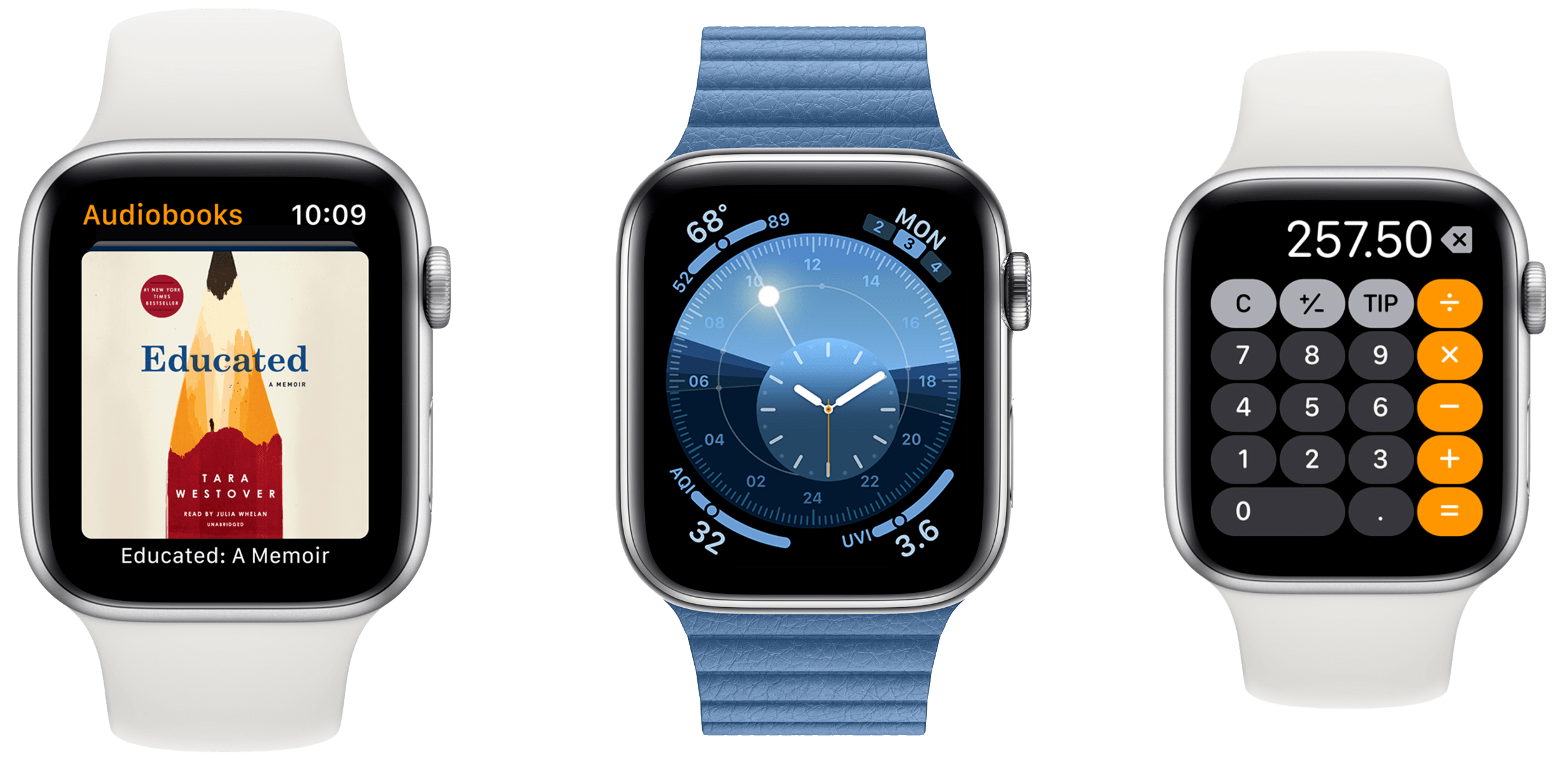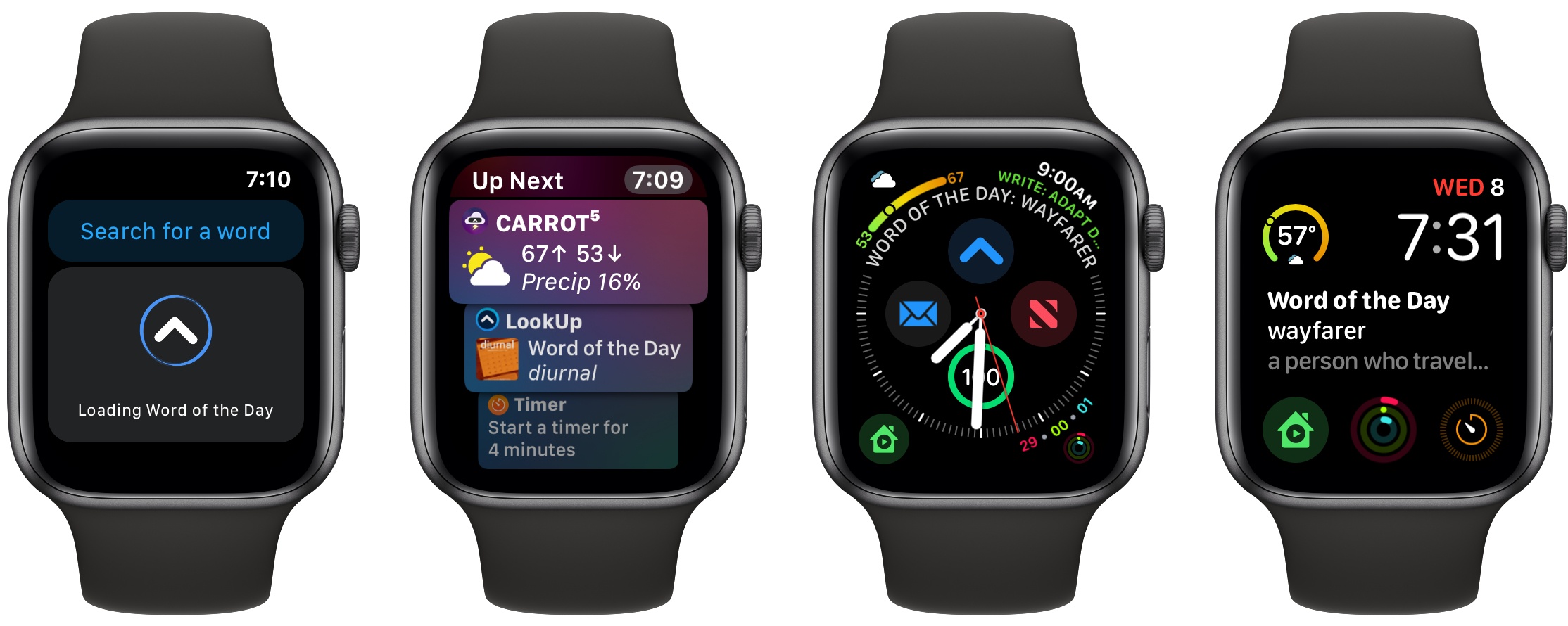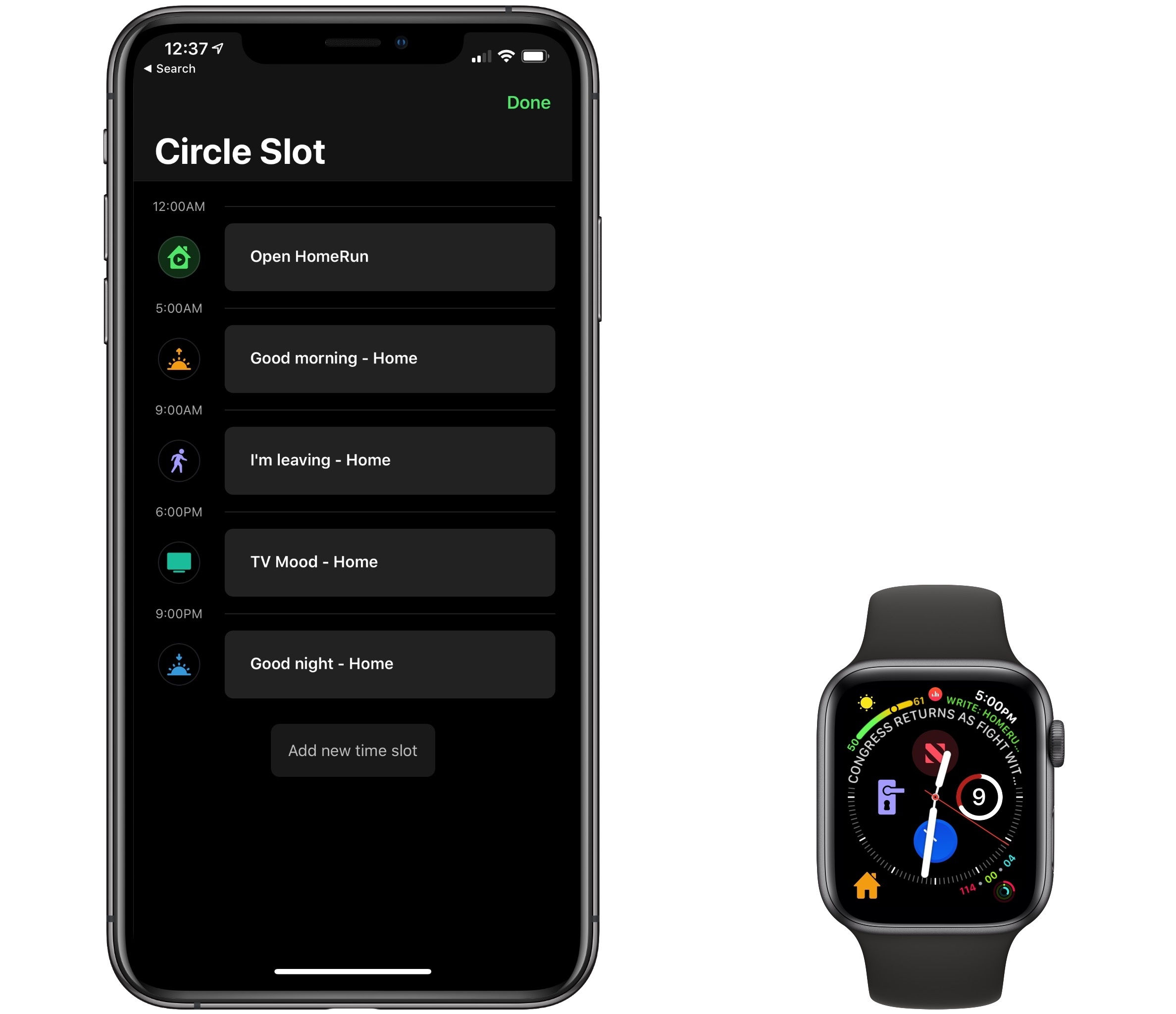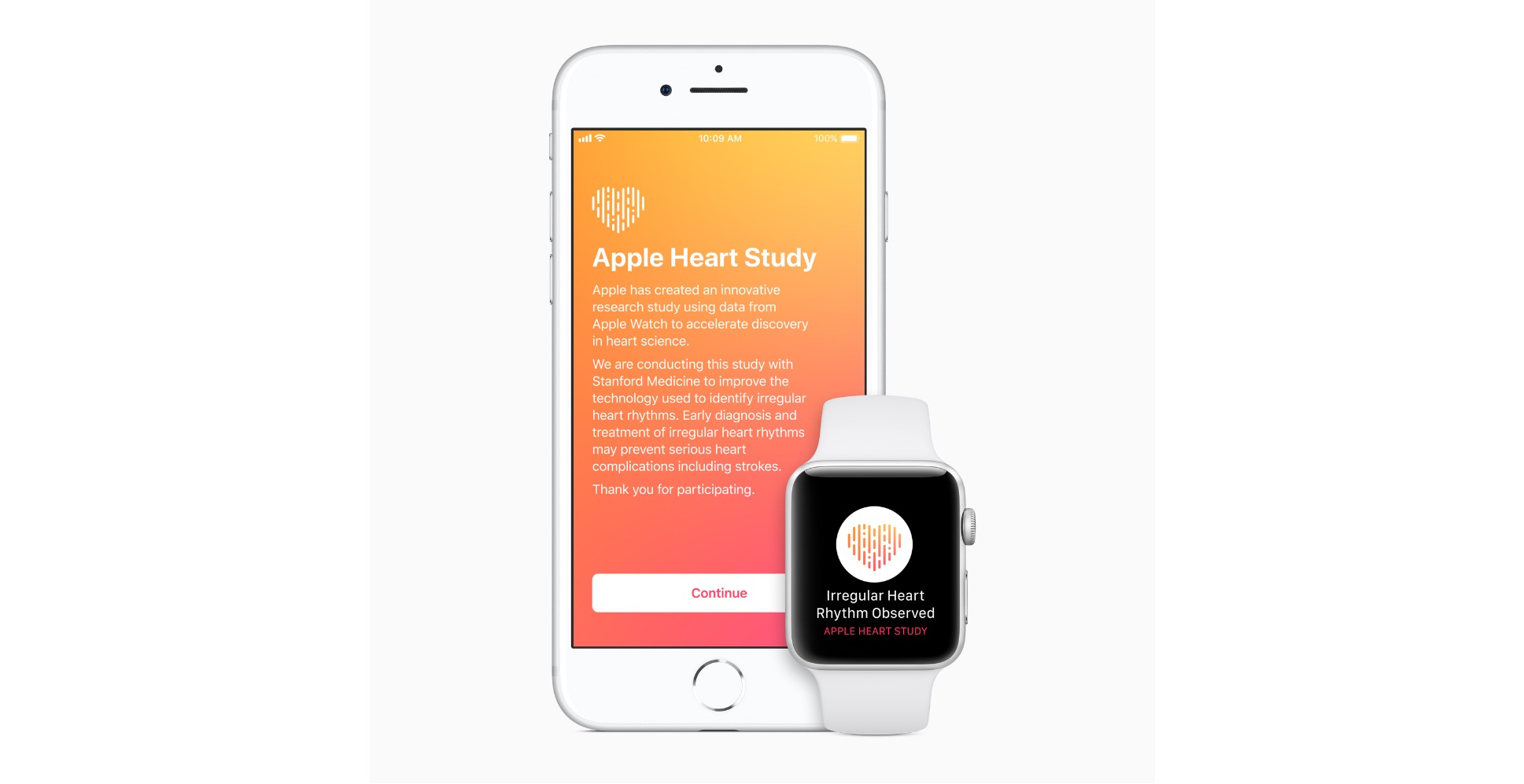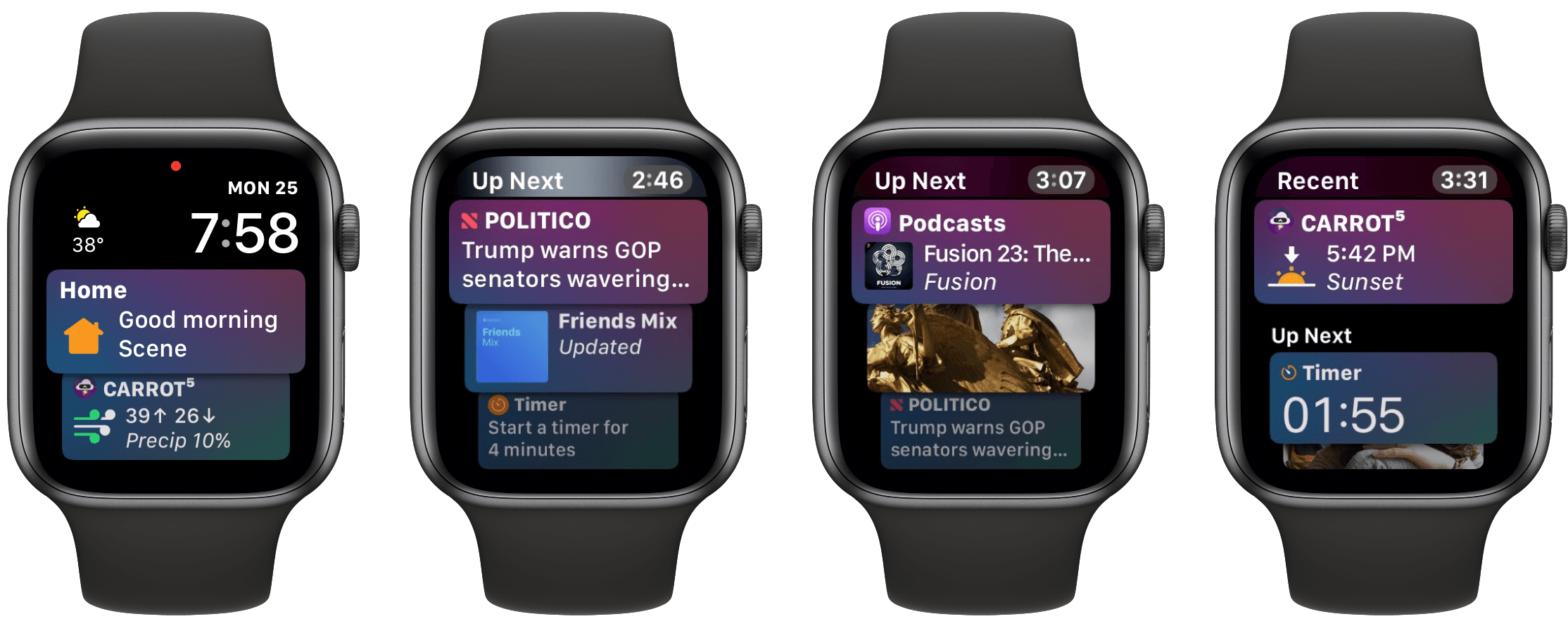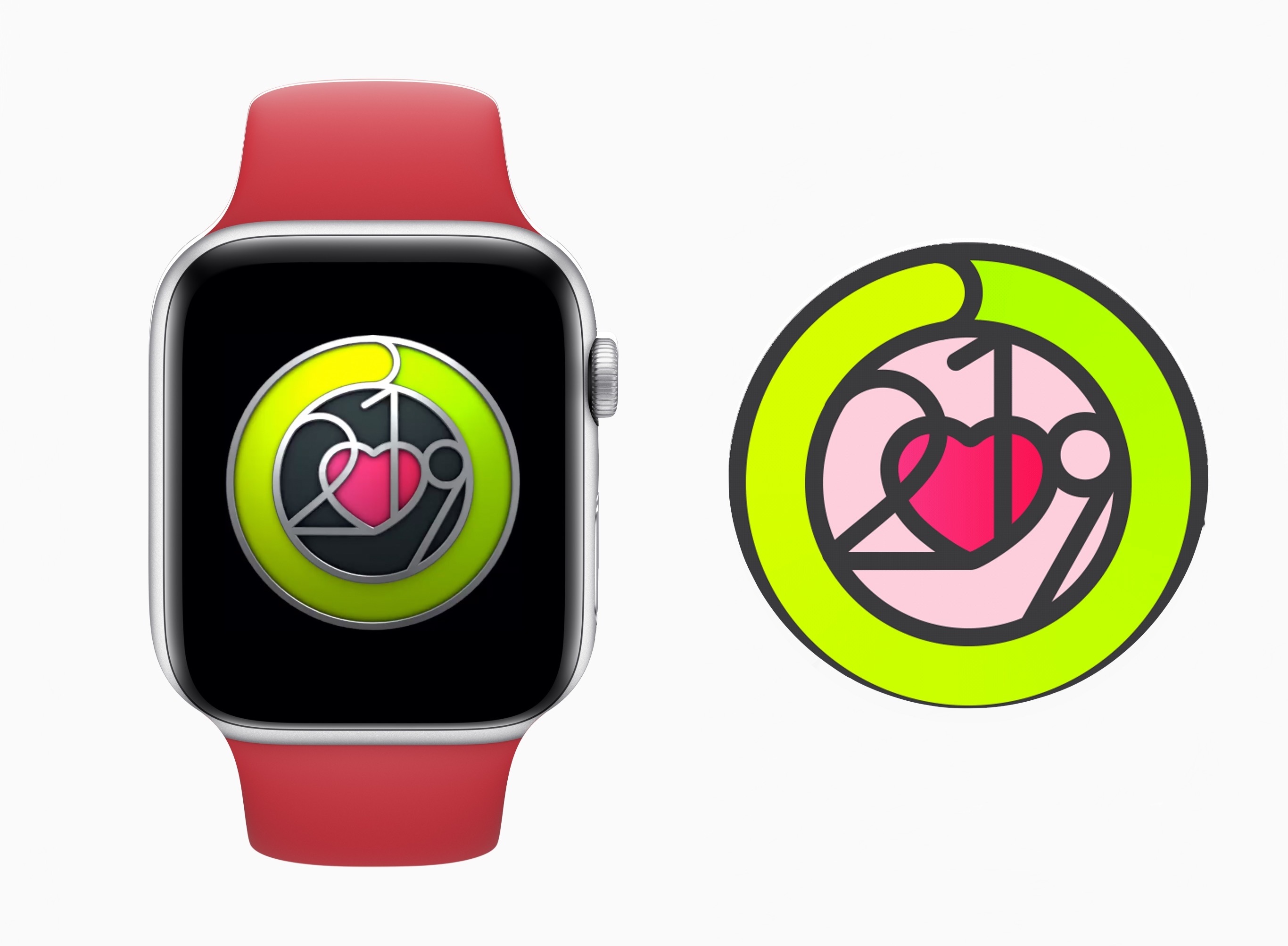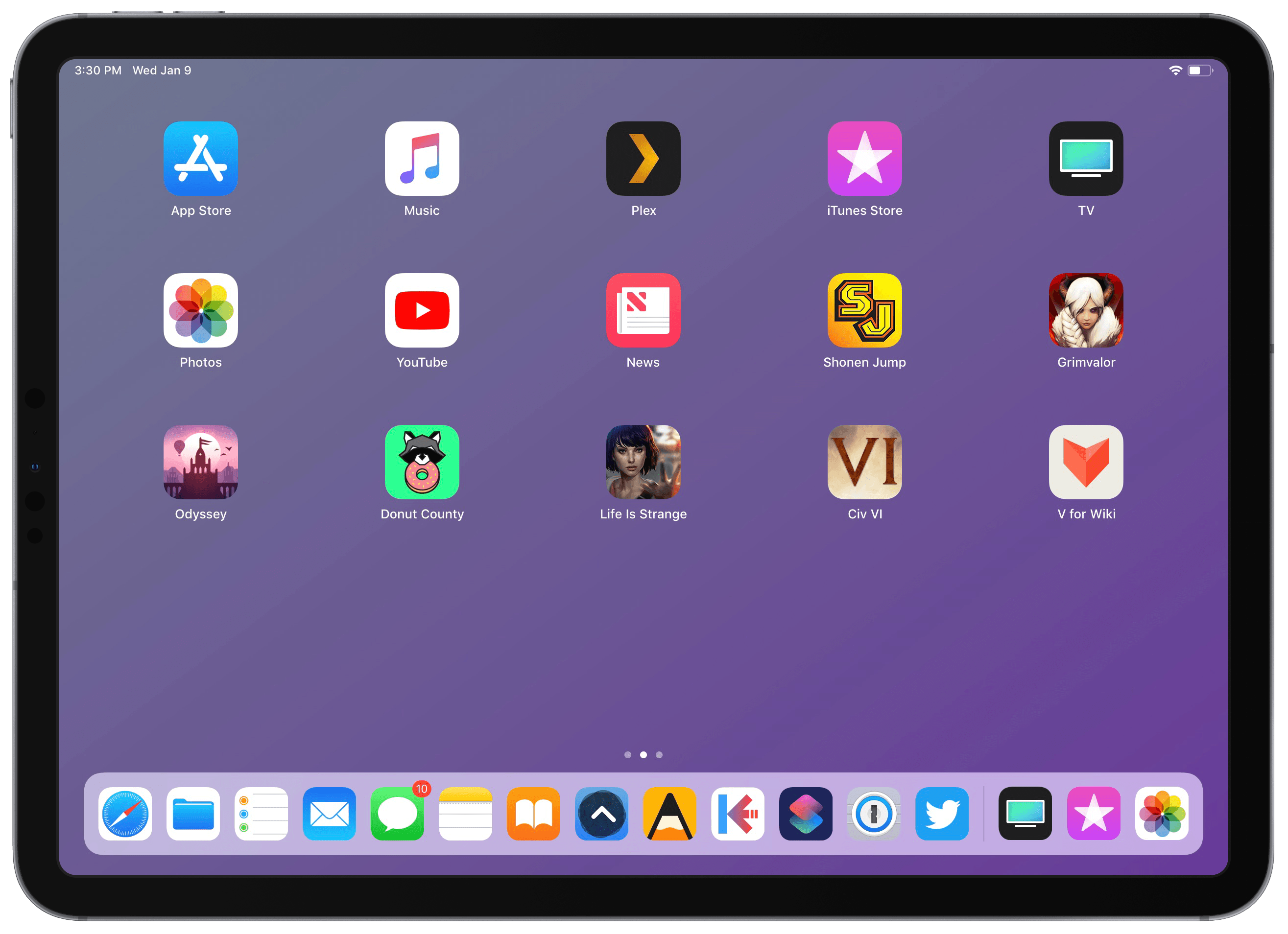Today at Apple’s annual WWDC keynote address in San Jose, California, Tim Cook took the stage to announce the latest update to Apple’s smartwatch operating system. watchOS 6 is coming this fall, and boasts a number of big changes. Most significantly, watchOS 6 makes progress on the independence of the Apple Watch from the iPhone, adds a number of new APIs and health features, and includes an all-new native UI framework for developers.
Posts tagged with "apple watch"
watchOS 6: The MacStories Overview
LookUp 5.2 Brings New Watch App, Handoff Support, and Instant Search
Today my favorite dictionary app, LookUp, was updated to version 5.2 on iOS and watchOS. The update centers around a new, modernized Watch app with a feature I’m really excited about: Siri face support for the word of the day. The Watch app isn’t the only noteworthy improvement though, as LookUp has also added Handoff support and search improvements on iOS.
HomeRun Launches Advanced Daily Routine Feature for Complications and Siri Face
HomeRun 1.2 was released today from developer Aaron Pearce, the latest evolution of the Apple Watch app for controlling HomeKit scenes from your wrist. Its last big update introduced the ability to create custom complications on the Watch, which was a fantastic addition because it enabled users to implement the complications that work best for them personally. Today’s update extends the theme of user customization and programmability, but takes it to a whole new level – exceeding anything I’ve seen from another Watch app before now.
Version 1.2 of HomeRun revolves around one main feature – daily routines – which takes a couple different forms. In each manifestation, however, daily routines equip users to program which actions the app surfaces on their wrist during the course of a normal day.
Apple Watch’s ECG App and Irregular Rhythm Notification Expand Across the Globe→
Yesterday Apple released watchOS 5.2, lagging just a couple days behind iOS 12.2. For users in the United States, there isn’t much worth noting about this latest Watch update, but it’s a different story around the world. Apple’s press release highlights the health-related features it brings support for:
The ECG app on Apple Watch Series 4, a direct-to-consumer product that enables customers to take an electrocardiogram right from their wrist, is available in Hong Kong and 19 European countries, including France, Germany, Italy, Spain and the United Kingdom. In addition to receiving De Novo clearance in the US from the FDA, the ECG app and irregular rhythm notification are now CE marked and cleared in the European Economic Area.
The ECG app is limited to Apple Watch Series 4, while users of the Series 1 or later will benefit from the irregular rhythm notification, a feature that requires first opening the iPhone’s Health app to enable it.
Countries that now support the ECG app: Austria, Belgium, Denmark, Finland, France, Germany, Greece, Guam, Hong Kong, Hungary, Ireland, Italy, Luxembourg, Netherlands, Norway, Portugal, Puerto Rico, Romania, Spain, Sweden, Switzerland, the UK, US and US Virgin Islands.
Apple can often launch a feature or service in the US, then be extremely slow to roll it out elsewhere (see: Apple News). For health features like these though, I think it’s particularly important for Apple to prioritize global expansion, despite the huge amount of red tape that must be worked through. Access to a new media service like Apple News or TV is nice, but the work being done with Apple Watch has the potential to be life-changing. I hope we continue to see these features spread as far and wide as possible.
Apple Introduces New Lineup of Watch Band and iPhone Case Colors
Alongside the release of the new AirPods, Apple has released a new lineup of spring Apple Watch bands and iPhone cases that span several different band models and case types.
For the Watch, Apple has introduced new versions of its Sport Band, Sport Loop, and Leather band. There are also new versions of the Nike Sport Band, Nike Sport Loop, and Hermès Leather bands.
Stanford Medicine Presents Results of the Apple Heart Study
Over 400,000 people participated in the Apple Heart Study, which used the Apple Watch to collect irregular heart rhythm data from participants for eight months. When an irregular rhythm was detected and suggested the possibility of arterial fibrillation, the Watch sent the user a notification. Study participants who got the notification were contacted telephonically by a doctor and given an electrocardiogram patch for further monitoring.
This weekend, Stanford Medicine reported the results of the study at the American College of Cardiology’s Annual Scientific Session and Expo in New Orleans. The study showed that 0.5% of participants received irregular rhythm notifications putting to rest concerns in some quarters that the Apple Watch’s sensor would overburden health professionals with false positives. In a press release, Jeff Williams, Apple’s Chief Operating Officer said:
We are proud to work with Stanford Medicine as they conduct this important research and look forward to learning more about the impact of Apple Watch alongside the medical community. We hope consumers will continue to gain useful and actionable information about their heart health through Apple Watch.
We’re still in the early days of the potential healthcare benefits of wearable devices like the Apple Watch, and it’s encouraging to see results like these, which show the potential good that can come from arming people with information to help them get the care they need.
Why the Siri Face Is All I Need from My Apple Watch
What should a wrist computer ideally do for you?
Telling the time is a given, and activity tracking has become another default inclusion for that category of gadget. But we’re talking about a computer here, not a simple watch with built-in pedometer. The device should present the information you need, exactly when you need it. This would include notifications to be sure, but also basic data like the weather forecast and current date. It should integrate with the various cloud services you depend on to keep your life and work running – calendars, task managers, and the like. It doesn’t have to be all business though – throwing in a little surprise and delight would be nice too, because we can all use some added sparks of joy throughout our days.
Each of these different data sources streaming through such a device presents a dilemma: how do you fit so much data on such a tiny screen? By necessity a wrist computer’s display is small, limiting how much information it can offer at once. This challenge makes it extremely important for the device to offer data that’s contextual – fit for the occasion – and dynamic – constantly changing.
Serving a constant flow of relevant data is great, but a computer that’s tied to your wrist, always close at hand, could do even more. It could serve as a control center of sorts, providing a quick and easy way to perform common actions – setting a timer or alarm, toggling smart home devices on and off, adjusting audio playback, and so on. Each of these controls must be presented at just the right time, custom-tailored for your normal daily needs.
If all of this sounds familiar, it’s because this product already exists: the Apple Watch. However, most of the functionality I described doesn’t apply to the average Watch owner’s experience, because most people use a watch face that doesn’t offer these capabilities – at least not many of them. The Watch experience closest to that of the ideal wrist computer I’ve envisioned is only possible with a single watch face: the Siri face.
Apple to Celebrate Heart Month in February with Activity Challenge and Today at Apple Sessions
Apple announced this morning two ways it plans to celebrate Heart Month in February. First, a new Activity Challenge for Apple Watch users will run from February 8-14, rewarding those who close their Exercise ring each day of that week-long period with a special badge and iMessage stickers. Second, Apple will be utilizing its retail Today at Apple sessions to educate consumers on their heart health.
In recognition of Heart Month, Apple will host special Today at Apple sessions, “Heart Health with Apple,” in stores in New York, Chicago and San Francisco with celebrity fitness trainer Jeanette Jenkins, Sumbul Desai, MD, Apple’s vice president of Health, Nancy Brown, CEO of the American Heart Association, Jay Blahnik, senior director of fitness for health technologies, and Julz Arney and Craig Bolton from the Apple Fitness Technologies team. Attendees will hear a discussion about heart health and participate in a new Health & Fitness Walk, which was co-created with Jeanette for participants to take a brisk walk with Apple Watch around their community.
These special sessions will be limited to a single session each in the three listed cities, with Apple Union Square hosting on February 11 at 6:00pm, Apple Williamsburg on February 21 at 4:30pm, and Apple Michigan Avenue hosting the final session on February 27 at 6:00pm.
Health is an area of growing importance to Apple, as the evolution of the Apple Watch over its life has shown. Because of that, educating users on heart health via Today at Apple seems like a natural move for the company. And it’s a safe bet we’ll start seeing more health-focused sessions introduced in the future.
Apple Frames Shortcut, Now with Support for the 11” iPad Pro and Apple Watch Series 4 40mm
Apple Frames, my shortcut to add device frames to screenshots taken on modern Apple devices, has been updated with support for the 11” iPad Pro and 40mm Apple Watch Series 4. This marks the second major update to Apple Frames, which now supports the following Apple devices:
- iPhone 6, 7, 8, and X
- iPhone XS and XS Max
- iPad Pro 11” and 12.9” (2018 models)
- Apple Watch Series 4 (44mm and 40mm)
- MacBook Pro (Retina 13”)
- iMac 5K


